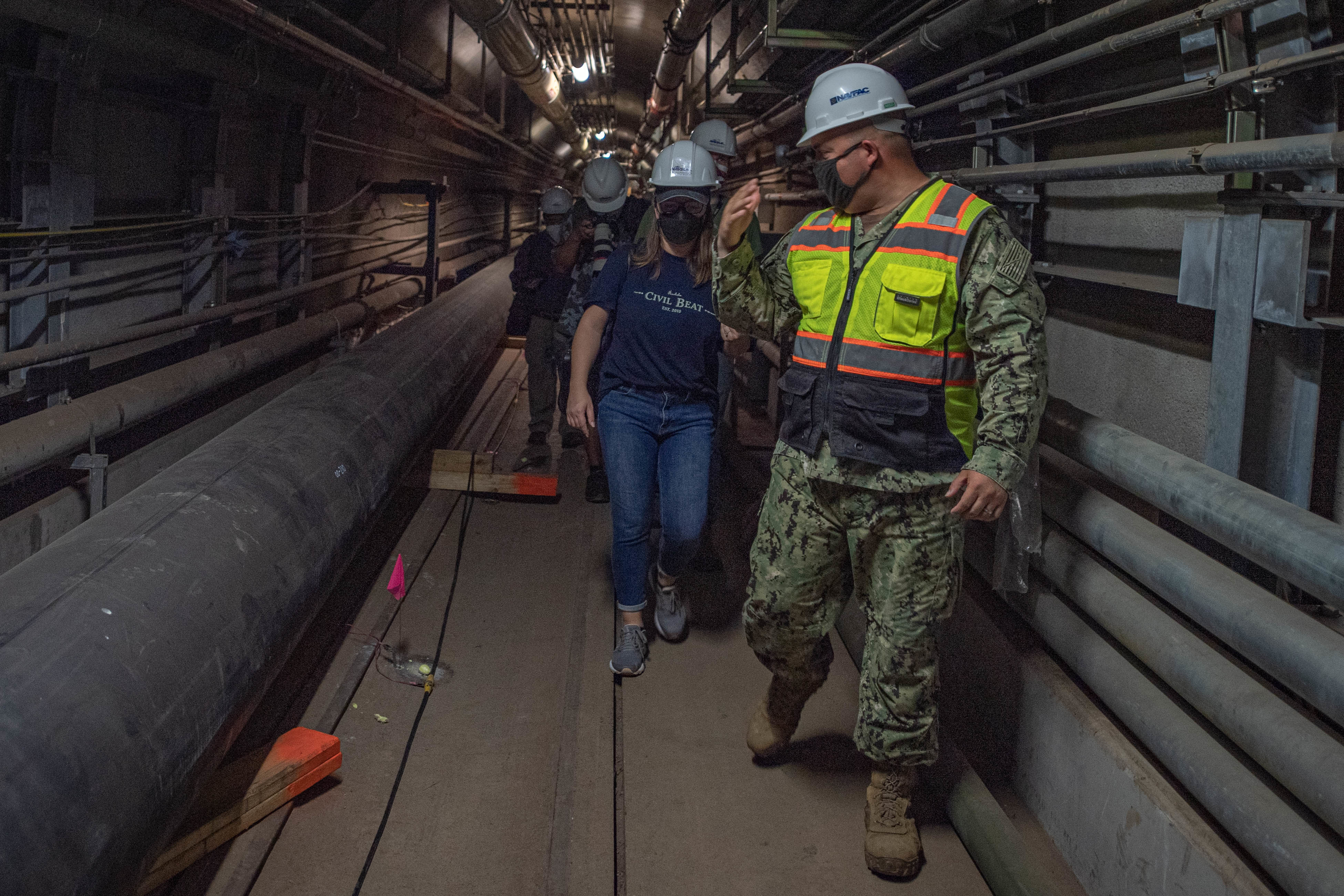
The Pentagon wants more time to weigh its options before it complies with an order from the Hawaii state government to drain the fuel out of a strategically important resupply hub at Red Hill, department officials said this week.
The Hawaii Department of Health issued an emergency order in December to drain the tanks of the World War II-era fuel depot that can hold about 250 million gallons of fuel after a 14,000-gallon fuel leak contaminated drinking water used by military and civilian families. The Navy initially said it would comply with the order, USNI News reported last month.
However, the Navy has decided to appeal the decision from state officials in order to give it more time to make “evidence-based and transparent decisions,” Deputy Secretary of Defense Kathleen Hicks said in a Monday statement.
“Despite these legal process requirements, we hope to collaborate with the State of Hawaii in a way that would allow the parties the time and space needed to reach solutions together,” Hicks said in the statement. “We proposed options for how this might work in an effort to find a mutually agreeable path forward, and we look forward to continuing our dialogue with the Governor, the Attorney General and the Hawaii Department of Health.”
The decision to appeal the health department order has angered some local Hawaiian officials, as well as congressional delegates.
“Put simply, the Department of Defense’s decision to appeal the State’s emergency order is a betrayal to the people of Hawai’i,” Rep. Kai Kahele (D-Hawaii) said in a statement on Twitter. “There is no more precious resource than our water.”
Sen. Mazie Hirono (D-Hawaii) told Honolulu Civil Beat she will oppose any DoD appeal.
“I urge all parties to continue working together to reach our shared goals of protecting Oahu’s drinking water, well remediation, returning families to their homes, and developing and implementing a plan for the future of the strategic fuel reserve for our national security,” Hirono told the news site.
While the Navy plans to appeal, it will be submitting a work plan and schedule to the Hawaiian health department that will lay out how a third-party commercial firm will assess Red Hill’s system integrity and operations in order to either operate the fuel facility or defuel it, according to Hicks’ statement.
The assessment’s deadline is April 30. In the meantime, the operations at the facility have been suspended, which dates back to a November spill into the local aquifer under the tanks.
“We know the importance of getting this right for the people of Hawaii, our service members, and our military families,” Hicks said in the statement. “We are taking this seriously, and the Secretary has prioritized resources from across the Department to effectively and efficiently take the steps required to address this problem.”
The Department of Defense takes the Red Hill leak very seriously, Pentagon Press Secretary John Kirby said during a Tuesday press conference.
“Number one priority is to make sure we’re looking after the military personnel and their families, as well as residents, civilian residents, affected by this contamination and […] Navy’s working on that very, very hard,” Kirby said.
“But one thing is for sure […] we are going to have security commitments in the Indo-Pacific long term,” he said. “And those security commitments are gonna require fuel and sustainment. And so we got to think about that seriously.”
The Red Hill fuel facility is one of the military’s largest hardened underground fuel stores, Timothy Walton, a fellow at the Hudson Institute, told USNI News
“Red Hill provides critical war reserves stocks for the Indo Pacific Command and globally for Defense Logistics Agency energy,” Walton said. “And it’s an essential store of fuels.”
Gaps in fuel can have operational effects, he said, citing examples of planes not having enough fuel to get to their destination without needing to stop in Oahu or ships that would normally collect fuel in Red Hill to distribute to other areas being unable to do so.
If the fuel at Red Hill is drained, the Department of Defense will likely try to save it, as it is an expensive commodity, Walton said.
That will be done by transferring it to Pearl Harbor or through the use of commercial fuel storage tanks, he said.
Back in 2018, the Department of Defense looked at upgrade options for Red Hill’s tanks, which would have resulted in a drop of more than a million barrel storage, Walton said. The Red Hill leak has caused the DOD to now face a drop of more than 5 million barrels in terms of storage capacity.
“And so they’re gonna have to figure out a creative approach to tackle this challenge,” he said.





